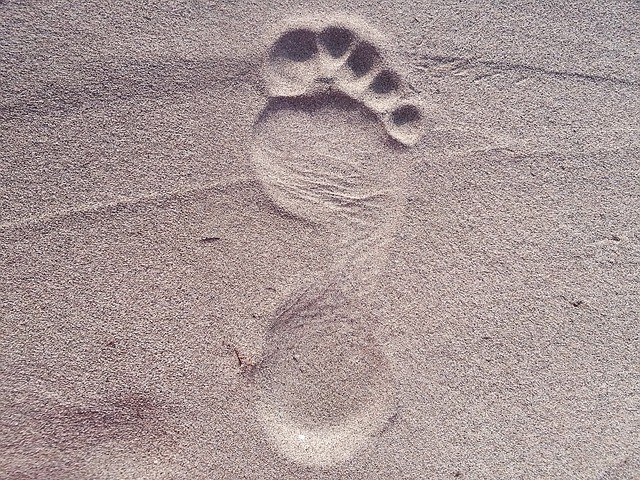
The discovery of ancient desert footprints that were only seen when drenched with water in the salt flats in a Utah desert is said to be a discovery of a lifetime. Since they disappeared when it was dry, they prompted scientists to call them ghost footprints.
Ancient Footprints Discovered in the Desert
The earth's makeup renders it almost invisible, so these ancient human traces are not visible. If it dries out, it will be visible if it rains, according to Live Science.
Early in July, while traveling to another nearby archaeological site at Hill Air Force Base in Utah's Great Salt Lake Desert, researchers stumbled upon strange impressions.
The footprints were found using ground-penetrating radar (GPR), with 88 footprints seen, ranging from adults to five-year-old children, reported Science Alert.
All were barefoot, and about 10,000 years ago, when the Utah desert used to be drenched with water. But the authors think it is 12,000 years old during the last part of the ice age in the Pleistocene Era.
Anya Kitterman, a cultural resource manager at Hill Air Force Base who oversaw the archaeological work, said the find and how many prints are once in a lifetime. The sheer number of individuals is more than expected.
The study is still underway and not yet peer-viewed, as the ancient desert footprints are still being studied.
Desert Was Once a Great Salty Lake
The Great Salt Lake Desert, which bears the same name as the nearby Great Salt Lake, the biggest saltwater lake in the Western Hemisphere, was previously covered by a sizable, salty lake.
Read Also: Cave Sealed Off for 5 Million Years Contains 33 Blind Creatures, Surviving Without Oxygen
Climate change dried up the ancient lake in the last Ice Age, and salt in the desert is a remnant of it, At the time of the human crossing that left the prints, the shift from lake to dry salt flats was a wetland about 10,000 years ago, citing News Cornell.
The lead researcher Daron Duke, an archaeologist, said the ancient peoples were walking in shallow water, leaving prints as if on a sandy beach.
Since the wetlands dried up, salt has been added to the footprints, blending them with the surrounding terrain when they are dry. Rain makes the sediment wet and returns its natural color. If it weren't for trapped rainfall, it would remain invisible.
A hunter-gatherer camp from 12,000 years ago was discovered less than a mile from the prints, implying that the people who left the prints may have lived nearby.
At the location where the prehistoric hunter-gatherers lived, numerous artifacts, including charred tobacco leaves and over 2,000 animal bones, were discovered. Some of the footprints were retrieved by the researchers involved in the latest discovery to determine their exact age.
Researchers plan to use radiocarbon dating to analyze microscopic fragments of organic material that may have been caught in the silt by the foot of whoever left the traces. These ancient desert footprints drenched with water appear; they reveal ghost prints lost in time. They are physical connections to ancestors long gone.
Related Article : Astrophysicists Propose More Insights About Life Stages of Supermassive Black Holes Based on Study
© 2026 HNGN, All rights reserved. Do not reproduce without permission.








